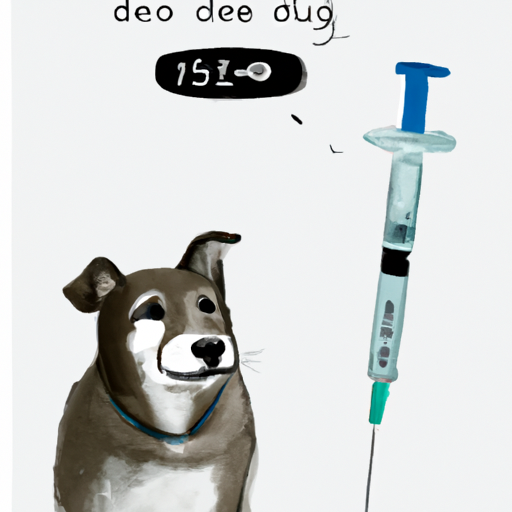As a caregiver, understanding your dog’s health condition can be a daunting task, but it is crucial to ensure they live a healthy and comfortable life. In this comprehensive guide, you will learn everything you need to know about diabetes mellitus in dogs.
Understanding Diabetes Mellitus
Diabetes mellitus is a chronic disease that affects the way a dog’s body utilizes glucose (a form of sugar). In a healthy dog, the pancreas produces insulin which regulates the distribution and use of glucose. However, in a diabetic dog, the pancreas fails to produce enough insulin, or the dog’s body becomes resistant to insulin, leading to high blood sugar levels.
Types of Diabetes in Dogs
There are two primary types of diabetes in dogs:
- Type 1 diabetes: This is the most common type, characterized by insufficient insulin production.
- Type 2 diabetes: This is less common and is characterized by insulin resistance.
| Type | Description |
|---|---|
| Type 1 | Insufficient insulin production |
| Type 2 | Insulin resistance |
Symptoms of Diabetes in Dogs
The symptoms of diabetes can be subtle and easily overlooked. Here are some signs to watch out for:
- Excessive thirst and urination
- Weight loss, despite increased appetite
- Fatigue and weakness
- Cloudy eyes (in dogs with cataracts)
- Chronic or recurring infections
Risk Factors for Diabetes in Dogs
Certain factors increase a dog’s risk of developing diabetes. These include:
- Age: Diabetes typically affects middle-aged to older dogs.
- Gender: Female dogs are twice as likely to have diabetes.
- Breed: Certain breeds like Schnauzers, Dachshunds, and Poodles have a higher risk.
- Obesity: Overweight dogs are more prone to diabetes.
Diagnosis of Diabetes in Dogs
Your vet will diagnose diabetes based on your dog’s symptoms, a physical examination, and laboratory tests. These tests might include:
- Blood tests to measure blood glucose levels
- Urine tests to check for glucose or ketones
Treatment of Diabetes in Dogs
The treatment for diabetes in dogs typically involves insulin therapy, dietary changes, and regular exercise. You will also need to monitor your dog’s blood sugar levels regularly. Your vet will guide you on how to administer insulin injections and monitor your dog’s blood sugar levels at home.
Managing Diabetes in Dogs
Managing diabetes involves a multi-faceted approach:
- Diet: Ensure your dog eats a balanced diet rich in fiber and low in fat.
- Exercise: Regular physical activity helps regulate blood sugar levels.
- Regular Checkups: Regular vet visits are crucial for monitoring your dog’s condition and adjusting treatment as necessary.
FAQs about Diabetes in Dogs
Q: Can my dog live a normal life with diabetes?
Yes, with proper management, your dog can live a normal, healthy life with diabetes.
Q: How often does my dog need insulin injections?
Most dogs need insulin injections twice a day, but your vet will determine the best regimen for your dog.
Q: Can diabetes in dogs be prevented?
While there’s no surefire way to prevent diabetes, maintaining a healthy weight and regular exercise can reduce the risk.
Q: Is diabetes in dogs curable?
No, diabetes is not curable, but it can be managed effectively with the right treatment and care.
As a caregiver, your role in managing your dog’s diabetes is crucial. With a good understanding of the disease, you can help your furry friend live a happy and healthy life despite the diagnosis.



